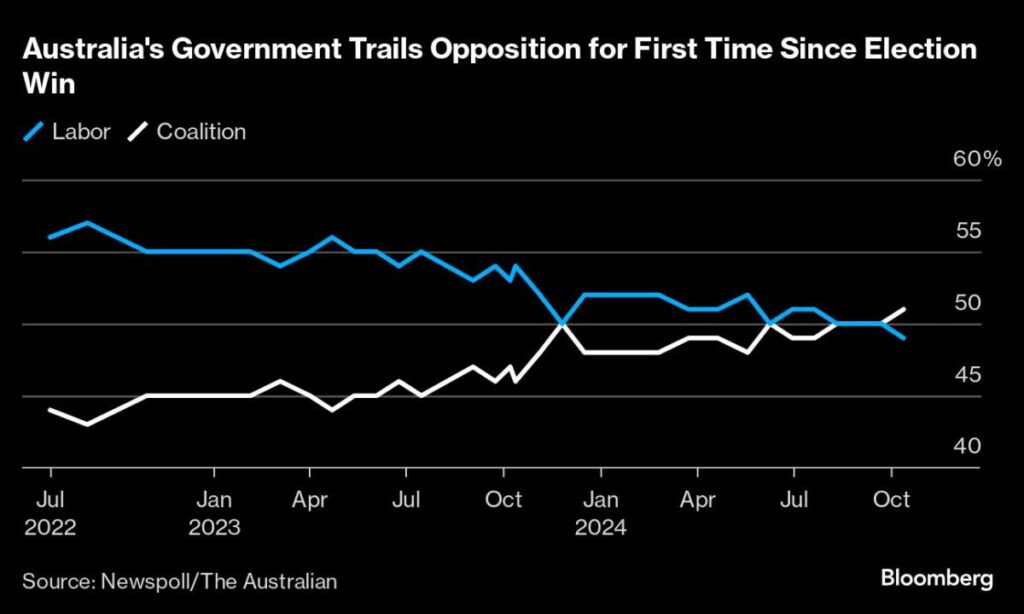Recent polling indicates that Australian Prime Minister Anthony Albanese’s Labor party has fallen behind the center-right opposition, signaling a competitive political landscape as the nation approaches an election anticipated by May. A Newspoll survey published by The Australian newspaper showed Labor trailing the Liberal-National coalition by 49% to 51%, marking the first time since taking office in 2022 that Albanese’s party has recorded such a deficit. Compounding these issues, the Prime Minister’s net approval rating has dropped by six points to negative 14%, placing him in a contentious position against Liberal leader Peter Dutton. This political shift highlights the potential challenges for the incumbent government, amid rising concerns about its economic management.
Albanese’s administration is currently leveraging hopes for a potential interest-rate cut from the Reserve Bank of Australia (RBA) in an effort to alleviate the financial strain afflicting many households. The Labor party maintains a slim majority in the House of Representatives, holding just three more seats than the opposition. Despite the lagging support in polls, if these trends were to persist until election day, Albanese could still feasibly pursue a minority government backed by independent lawmakers and smaller parties, providing a potential path to governance despite unfavorable polling.
The growing dissatisfaction among Australian citizens regarding the government’s economic stewardship has been underscored by persisting inflation, which has compelled the RBA to uphold its interest rates at a 12-year peak. This monetary policy approach stands in contrast to other countries that are beginning to ease their financial restrictions. Rising consumer prices, coupled with elevated borrowing costs, are exacerbating a cost-of-living crisis for many Australians. It is further complicated by a national housing crisis stemming from a shortage of available properties, soaring construction expenses, and high migration rates fueling demand for housing.
Opposition spokesperson Barnaby Joyce has noted a consistent downward trend in public approval for Albanese’s government, highlighting pressing issues like the soaring cost of electricity and the profound impact of living expenses on Australian families. Joyce’s comments, made during an Australian television segment, reflect a broader sentiment of frustration directed at the government as citizens navigate a tight financial landscape. Such economic challenges have become central to the political discourse as voters evaluate the effectiveness and choices of their elected officials.
Environment Minister Tanya Plibersek acknowledged the competitiveness of the election race, signaling that voters will increasingly draw comparisons between the policies and track records of the two major parties. With the election approaching, Plibersek suggested that the electorate would recall their experiences under the previous Liberal administration, referencing notable events and controversies such as the “Robodebt” scandal and the handling of secret ministries. These reminders of past government missteps may play a crucial role in shaping voters’ preferences as they weigh their options.
In summary, the tightening race ahead of the forthcoming election showcases a critical juncture for Albanese’s government. With economic issues largely framing public sentiment, the Labor party faces mounting pressures regarding its governance, particularly concerning inflation, living costs, and housing availability. Despite poll deficits, the possibility of coalition-building with independent and third-party lawmakers remains, suggesting that the final electoral outcome may still favor the incumbent. However, both political parties will need to navigate a complex landscape where economic performance heavily influences public opinion and electoral decisions.

